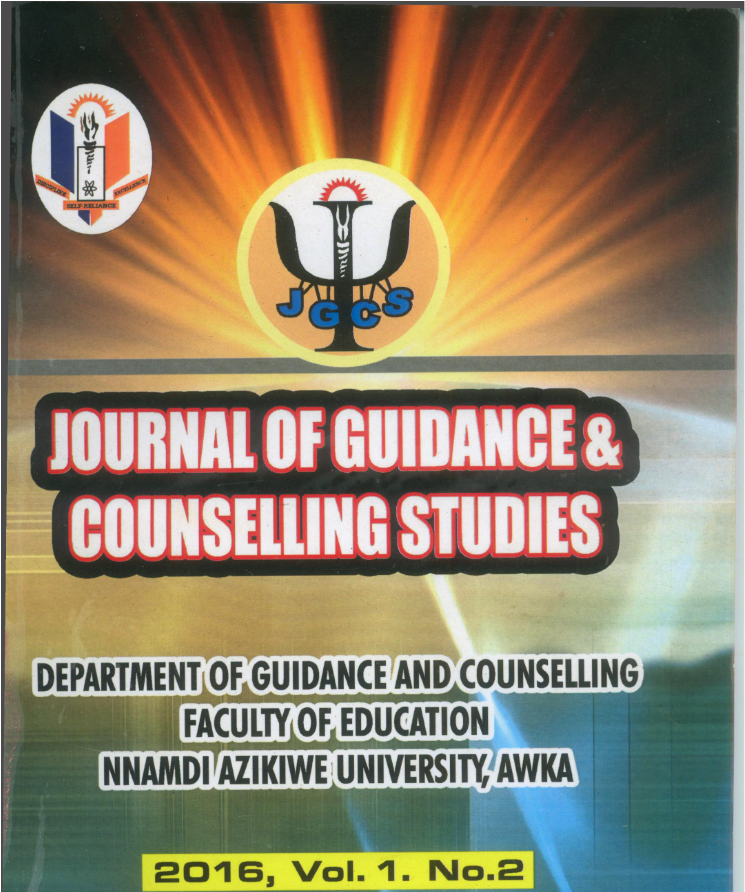PERCEIVED FACTORS THAT INFLUENCE HABITUAL CONSUMPTION OF ALCOHOLIC DRINKS AMONG THE YOUTHS IN ANAMBRA STATE. ADA ANYAMENE
Mots-clés :
consumption of alcoholic drinks, Anambra State, z-test, hypothesisRésumé
Consuming alcohol forms an important habitual social practice for the youths in many cultures despite the fact that it is harmful to the body. To gain more knowledge on the perceived factors that influence alcohol consumption among the youths in Anambra State, three research questions and one hypothesis guided the study. A descriptive survey was adopted. The population for the study comprised all the youths in Anambra State.
Purposive sampling technique was used to select 1,495 youths in Anambra State. Two hundred youths were purposively selected for the study. Data were collected using youth alcohol consumption questionnaire (YACQ) and was analyzed using mean scores for the research questions and z-test for the hypothesis. Based on the analysis of the data, the following findings were made. Male youths in the State are aware of the perceived factors that influence habitual consumption of alcoholic drinks. Also the female youths are aware of the perceived factors that influence habitual consumption of alcoholic drinks in Anambra State. The implication for counselling were discussed and the study made a number of recommendations and suggestions for further research.
Références
Berkowitz A.D. (2004). The social approach: theory, research, and annotated bibliography. Higher Education centre for Alcohol and other Drug Abuse and Violence Prevention. U.S. Department of education.
Centre for Addition and mental Health (CAMH)(2000b) “CAMH Best Advice Paper” Alcohol and drug prevention programs for youth: what works?
Chauham, K. (2007). Early adolescent exposure to alcohol advertising and its relationship to underage drinking: journal of Adolescent health, 40(60527-534.
Chikere, E.I.C. & Mayowa, O. (2011). Prevalence and Perceived health effect of Alcohol use among male undergraduate students in Owerri, south-East, Nigeria: a descriptive cross-sectional study.BMC Public Health 11,118.
Ducher (2001). A hand book of health education faber and faber Inc.
Dumbili (2012). Drink responsibility, die irresponsibility?. The menance of inadequate Government policies to regulate alcohol misuse in Nigeria. British journal of arts and social sciences. (Vo 17) British journal publsh Inc. retrieved August 14, 2014.
Encyclopedia Britannica (2010).. Alcohol. Encyclopedia Britannica, Students and home edition. Encyclopedia Britannica. Chicago:
Ehem, T.A. (2000): A survey of teenager perception of parental influence on alcohol consumption. Unpublishes M.Sc dissertation, University of Wiscon sin.
Egblue, J.N. (2002). Alcoholism. Issues and problems. Ibadan Spectrum Publication. Nig Ltd.
Jemigan, D.H, and Obot, I.S. (2006). Thirsting for African market, African Journal of Drug and Alcohol studies.
Johnston LD, O'Malley PM, Bachman JG, Schulenberg JE.(2011) Monitoring the Future National Survey Results on Drug Use, 1975-2010. Volume I: Secondary School Students. Bethesda, MD: National Institute on Drug Abuse.
Korieh, C.J. (2003). Alcohol and Empine: illicit “ Cum production and control in colonial eastern Nigerian. African Economic History, 3,111-134.
Kypril, K., Langley JD (2003) received social norms and their relation to university student drinking. Journal of studies on alcohol 64, 829-834.
Martin, M., Treno, V. And Gnibe E. (2003) Department of Health, tender, regulations relating to the labeling and advertising of alcoholic Beverages.
Mcpherson, A. (2000). A dairy of teenage health Oxford University Press, London.
Newburg-birch, F. (2009). Perceived effects of alcohol use on sexual encounters among Adults in South Africa. African Journal of Drug and Alcohol Studies 3 (1, 2).
Ogilvie, H. (2001)Alternatives to Abstinence: A New Look at Alcoholism and the Choices in Treatment. New York: Hatherleigh Press, 2001.
Schwarzer, R. (2010) Psychosocial correlate of substance use. Journal of Drug Education
Smart, L. (2007). Alcohol and human health Oxford'. Oxford University Press.
Swaim, 0. (2009), patterns of adolescent substance use. Journal of adolescent, 13(2): 105-108
Tikkanen, K.T(2008), social economic effects of alcohol abuse on families in Bumbaine sub country Bushenyi district unpublished work, Diploma dissertation in mental Health Butabika Nursing School. Kampala Uganda.
Van Heike G. (2012). Alcohol use and abuse. R health M.D. Retrieved August 14, 2012.
World Health Organisation (2006). Youth violence and Alcohol. WHO facts on Alcohol and violence. Geniva


